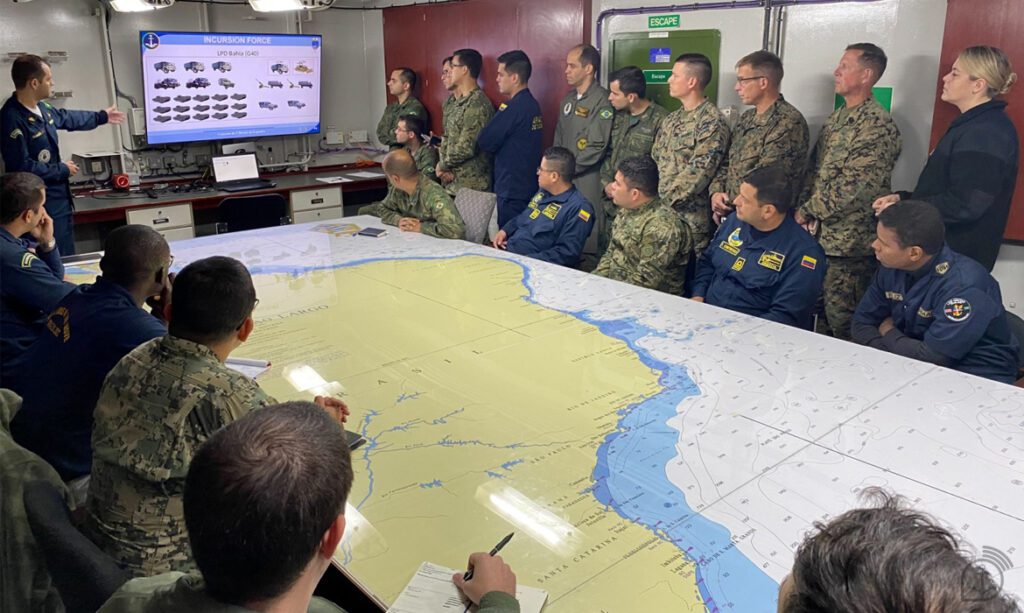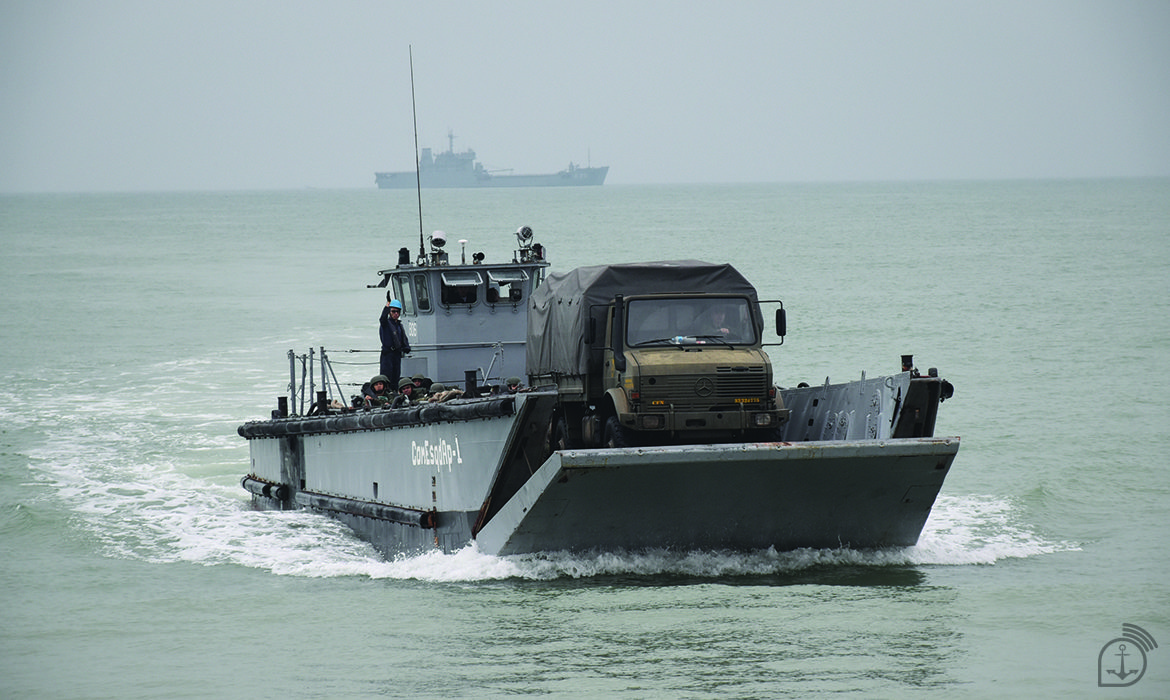Training reinforced the capacities of military personnel from more than ten countries
By Second Lieutenant (RM2-T) Thaís Cerqueira Francisco – Itaoca, ES
As part of UNITAS 2022, a multinational Amphibious Operation took place today (16) in Itaoca (ES). The Operation featured a simulation of the rescue of threatened citizens from the coast of a country in conflict, through an amphibious incursion, carried out by ships and aircraft from the Fleet and the Fleet Marine Force (FFE). In the previous edition, held in Brazil in 2019, the landing of troops took place on Marambaia Island (RJ).
Operation Amphibious is a naval operation whereby a Landing Force is launched from the sea, from military ships, over a coastal region to fulfill various types of missions. Such an operation can also be employed in peacetime to, for example, support a population that is stranded because it has been hit by a natural disaster.
Today, more than a thousand military personnel from the Brazilian Navy (MB) and from eleven other countries disembarked. Previously, special operations teams were stationed at strategic points. From the beach, amphibious assault vehicles and landing craft could be seen, which went ashore to disembark Brazilian Marines, Marines from the United States, Colombia, Ecuador, France, Jamaica, Mexico, Paraguay, Peru, Dominican Republic and Uruguay.
Divided into phases, UNITAS is the oldest multinational maritime exercise in activity. In UNITAS 2022, there are representatives from 19 navies, a larger number than in other editions and which also included navies from the European, African and Asian continents. It is organized annually by the North Americans and, in this edition, Brazil is the coordinator and host country. In the sea phase, Amphibious Operations aim to coordinate the efforts of the Naval Force with the Marine troops, seeking to reinforce the capacity to fulfill, for example, real humanitarian aid and disaster remediation operations.
As Rear Admiral Marcelo Menezes Cardoso, Commander of the 1st Fleet Division and of the Task Group reinforces, “in UNITAS, this objective has an even greater dimension, when we consider the opportunity to consolidate this coordination with other navies.”
In this Operation, the entire command of the troops was centralized by the Brazilian Marines, more precisely by Sea and War Captain (Marine) Luís Felippe Valentini da Silva, Commander of the Landing Troop. He even held operational control over the U.S. Marine Corps troops. This novelty contrasts with the organization of previous years, in which command and control structures were parallel.
For Sea and War Captain Valentini, exercises like UNITAS are an excellent opportunity to increase interoperability – the ability to work together – between the forces. “Since the port phase, we had the chance to work and develop together the actions that were used now. During this period, we strengthened our relationship, understood and reinforced the procedures of other countries, so that we could use complementary capabilities to constitute a landing force,” he highlights.

At sea, on land, and in the air
From the sea, all the Marines and their equipment disembarked from five ships of the Brazilian Navy: the Brazilian Navy’s Capitania, the Multipurpose Airship “Atlântico”; the Multipurpose Landing Ship “Bahia” and the Combat Carrier Landing Ship “Almirante Saboia”, of the MB; the Amphibious Transport Ship “Mesa Verde”, of the US Navy; and the Multipurpose Ship “Libertador”, of the Mexican Navy.
From land, it was possible to observe the deployment of a Landing Force with its combat, fire support, logistics, and communications systems. The Amphibious Caterpillar Carriers (CLAnf) and the armored vehicles on wheels “PIRANHA” were employed, as well as the new UNIMOG vehicles, recently acquired by the MB.
Also stationed in the exercise area were a battery of nationally manufactured ASTROS multiple rocket launchers, and an Advanced Trauma Unit (UAT), equipped with telemedicine resources, which is capable of providing medical care to military personnel in combat. From the air, MB aircraft were used, such as the AF-1 “Skyhawk” interception and attack aircraft and the UH-15 “Super Cougar” helicopter, as well as US aircraft (UH-1Y Venom and AH-1Z Viper helicopters) and Mexican aircraft (Mi-17 helicopter).

Source: Agência Marinha de Notícias *** Translated by the DEFCONPress Team ***
